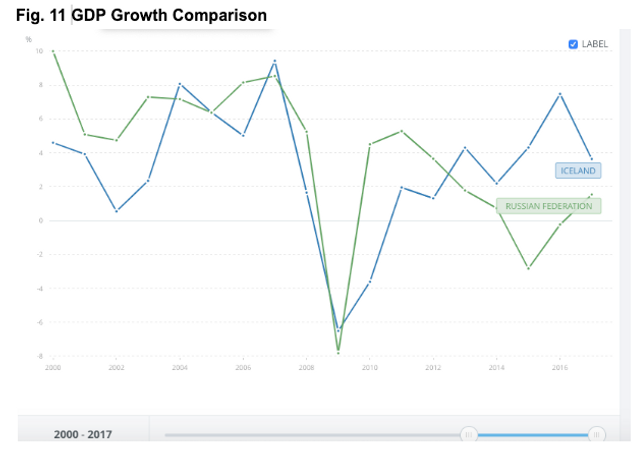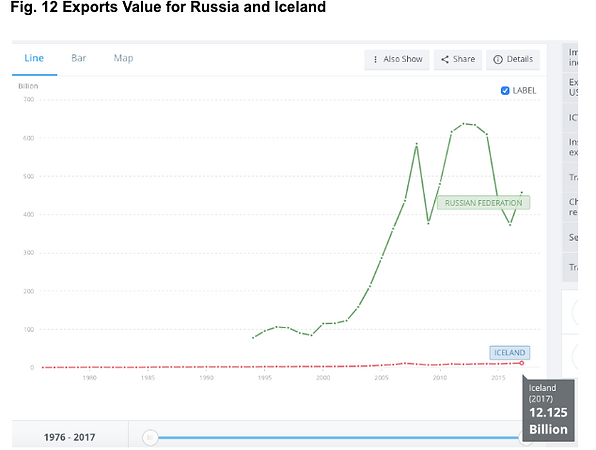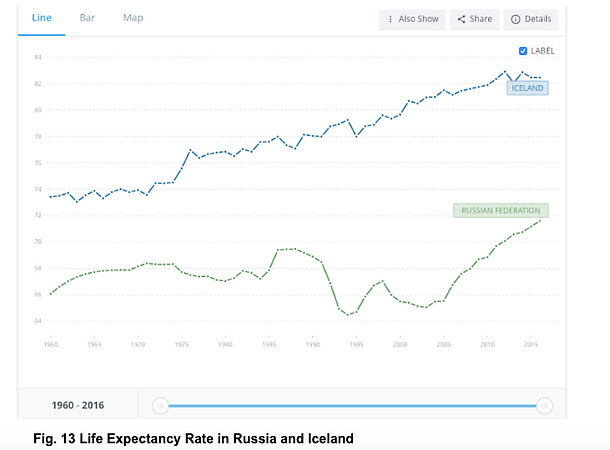I&S Macroeconomics
Aadya and Johanna
E-9A
Comparing Iceland and Russia

Iceland has a free market economic system while Russia is transitioning into one from a planned economic system. The GDP per capita for Russia in 2017 was 10, 742 USD and the GDP per capita for Iceland was 71,321 USD. As you can see, the difference is vast. The GDP growth for both counties is also quite distinct (refer to Fig.11). Russia’s GDP growth was 1.5% as of 2017 and Iceland’s GDP growth was 3.6% as of 2017. Iceland’s main exports go to Netherlands with 20%. Carbon-based electronics (28%) are exported and raw aluminum is imported (73%). Russia’s main exports go to China with 11%. Crude petroleum (53%) is exported and broadcasting equipment (10%) is imported from China. Iceland also trades with China but at a less percentage (1.8%) compared to Russia. They export non-fillet frozen fish at 66% and import import computers at 11%. Russia also trades with Netherlands at a less percentage than China but the difference is not like the difference between the trade amount of Netherlands and China. Russia trades crude petroleum (51%) and receives tractors in return (9.1%) . Russia and Iceland do not trade anything which each other but the difference in their exports value is very different (refer Fig. 12).

The life expectancy is so drastically different in these two countries, so that if you live in Iceland you would live 11.06 years more than in Russia (refer to Fig. 13). If you lived in Russia instead of Iceland you are 44.44% more likely to be unemployed and you would make 55.53% less money. In Russia there is a 50% more class divide than Iceland. However, you would use 85.76% less electricity than Iceland if you lived in Russia.
between 2008-2014 the adult literacy rate in Iceland and Russia has remained stable at 99% (Iceland Adult Literacy Rate). Russia’s poverty rate is 13.5% in 2016 while Iceland’s is 9% (Iceland Review).

The mixed economy in Iceland and Russia’s centrally planned economy has a few prominent differences. The mixed economy in Iceland is more free and regulated (Amadeo, Kimberly). The prices are determined by the free market and is under enough control of the government so that there are no biased competitions taking place. Russia’s economy on the other hand has almost all of the economic decisions taken by the government (Kenton, Will.). The companies are not rewarded for any risk taking or high profit achievements. The economic system in Russia is also open to more political repercussions as the people’s interest is not always taken into notice.